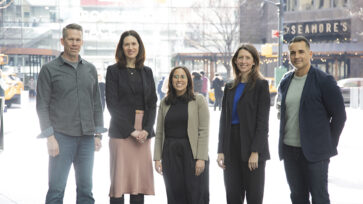
What happens when good reporters get swept up in the urgency to file a breaking medical news story? What results when academic, agency, and corporate communicators forget that, beyond getting news out quickly, we must consider how this same information will become a catalyst on which the health ecosystem—patients, payers, policymakers, providers, and product innovators—will engage?
Whenever news is hot and impacts many, the rush to file and share may supersede our greatest responsibility as health communicators, which is to create an environment where patient-physician conversation leads to informed decision. What happens? Confusion.
Frontpage—center—in
The New York Times two days ago, the
headline “
Good News for Women with Breast Cancer: Many Don’t Need Chemo” piqued my immediate interest. It’s an extraordinarily compelling news hook, and the story was subsequently picked up by cable and evening newscasts as short read items, without any original reporting or much in the way of critical reaction.
Veteran
Times reporter Denise Grady wrote about a
study, which “found that gene tests on tumor samples were able to identify women who could safely skip chemotherapy and take only a drug that blocks the hormone estrogen or stops the body from making it.” (The study was presented Sunday at the meeting of the American Society of Clinical Oncology in Chicago.
-ed.)
The
Times article reported that Genomic Health, the company that makes the gene test, assisted in the cost for the trial. The print version of Grady’s story mentions the study, called
TAILORx, is (now) in The New England Journal of Medicine (
NEJM), and the online version links to the publication. How many print readers will access the story link to the actual study?
While the headline grabs, the story has gaps. Conveyed as a tumor sample trial in the lede of the
Times article, the study actually involved more than 10,000 women with early stage, HR-positive, HER-2 negative, axillary lymph node breast cancer—simply put, women with a common form of early-stage breast cancer. Moreover, it was a Phase 3 trial, and the
National Cancer Institute oversaw the effort from start to finish. Readers need to search for that information.
Also, beyond corporate support, major breast cancer patient groups helped fund this effort, including the Komen Foundation and Breast Cancer Research Stamp, and likely would have had relevant input for the story, yet none of the advocates are quoted. After all, it’s likely the NCI and NEJM provided embargoed copies of their materials to media.
Finally, contrast the Times‘ headline word choice, “…Many Don’t Need Chemo,” with NCI’s press release, which contains a different title: “TAILORx trial finds most women with early breast cancer do not benefit from chemotherapy [emphasis added].” Should Times editors not have opted for the more nuanced headline, given the gravity of the news and that people will need to act on this information?
Big news: we are on the verge of confirming that a biomarker might make treatment more comfortable and equally effective for these women. Also big news: oncologists, breast cancer specialists and their patients and caregiver—patient advocates—have an important call to action; they must summarize what is actual and what is aspirational. They must hone the talking points for those big treatment conversations when patients ask: “What’s my best chance for survival?”
There is a fine line between hope and hype that information drivers must always draw—cautious optimism best expressed through accuracy and careful planning. Company communicators are bound by Securities Exchange Commission and Food and Drug Administration regulations.
At the same time, we must demonstrate professional acumen to ensure that our clients, and reporters who cover the landscape, have sufficient time to background on the trial design, target endpoints, and how these data may impact conversation among physicians and their patients—to ensure that the decision made by people on the frontlines reflect the benefits and personal risks.
Great headlines can inspire hope. Most importantly, they are the catalyst for conversations that either reassure or confuse. Accurate stories are in the best interests of the study sponsors and the people we ultimate serve—those with worries about health and survival.
Gil Bashe is managing partner, global health, for Finn Partners.







